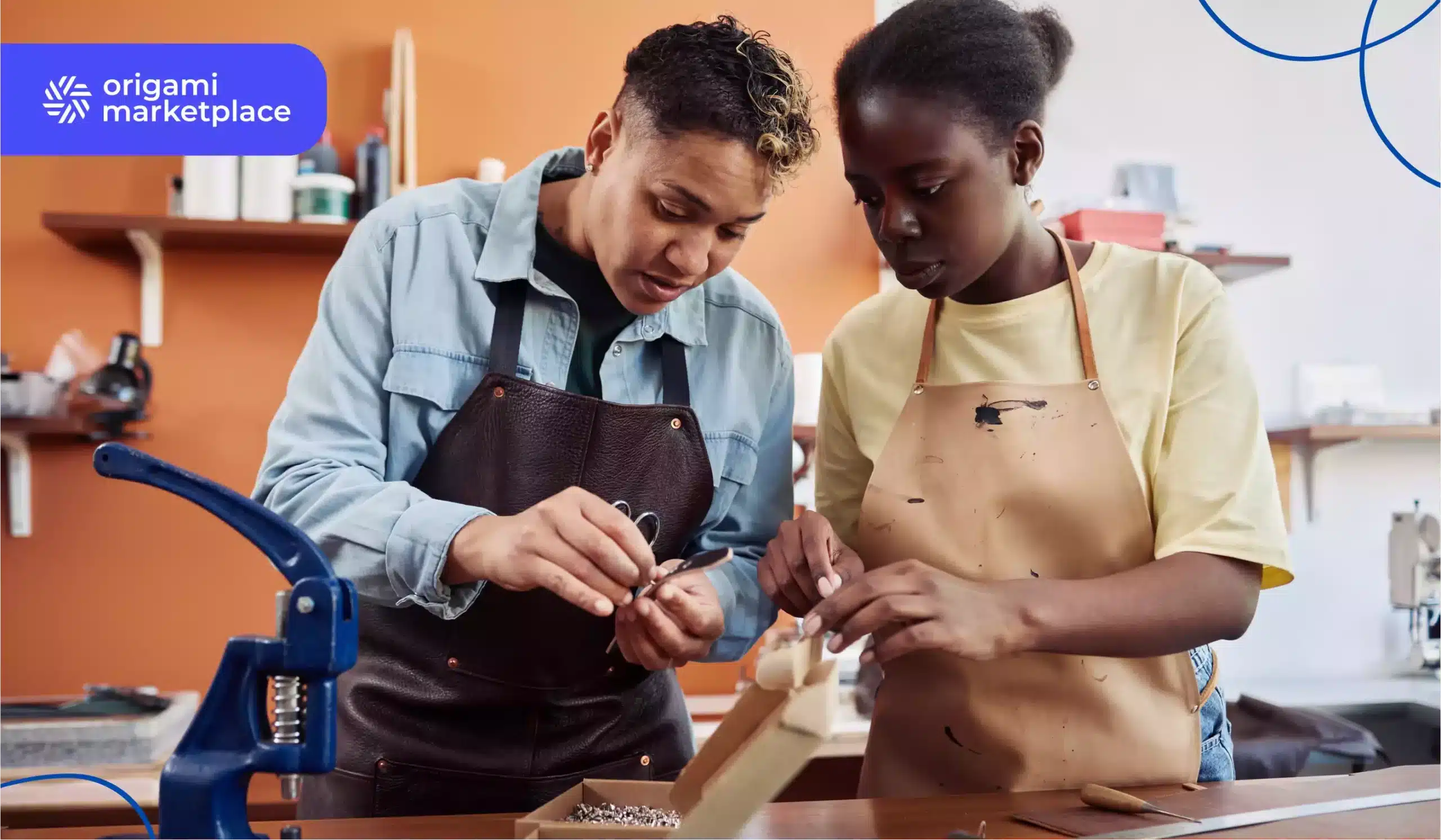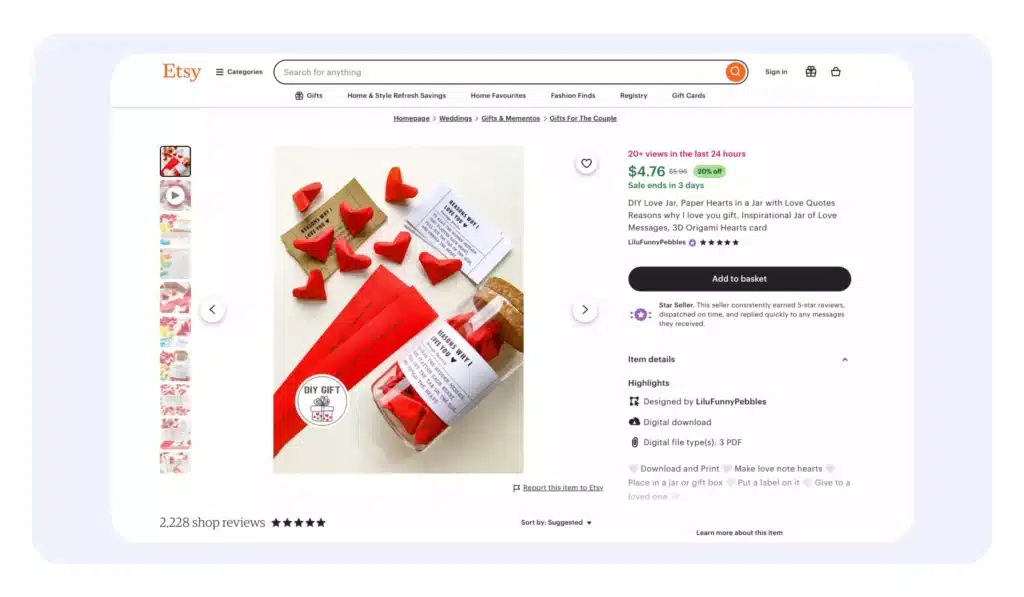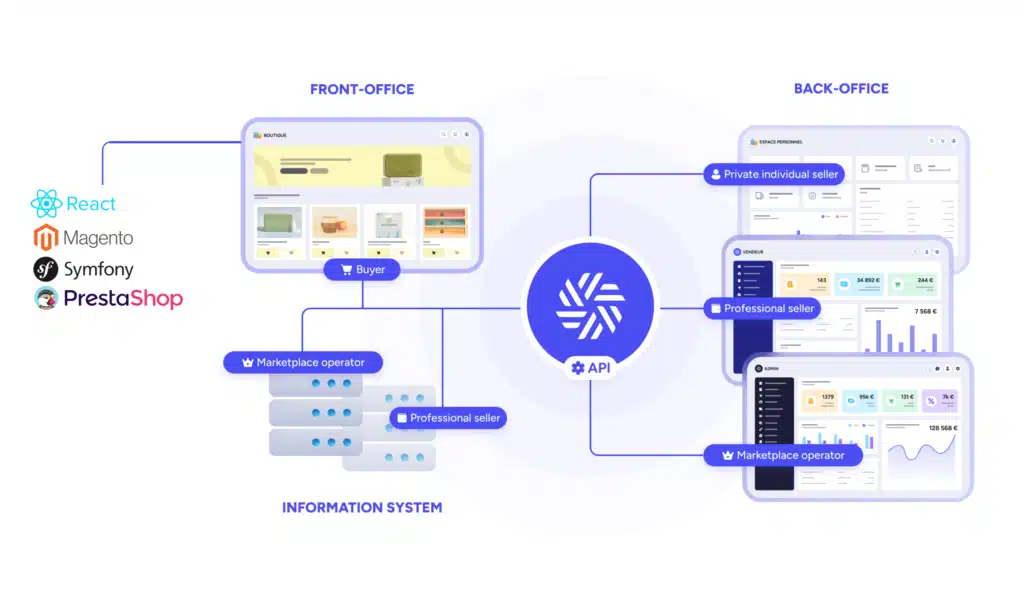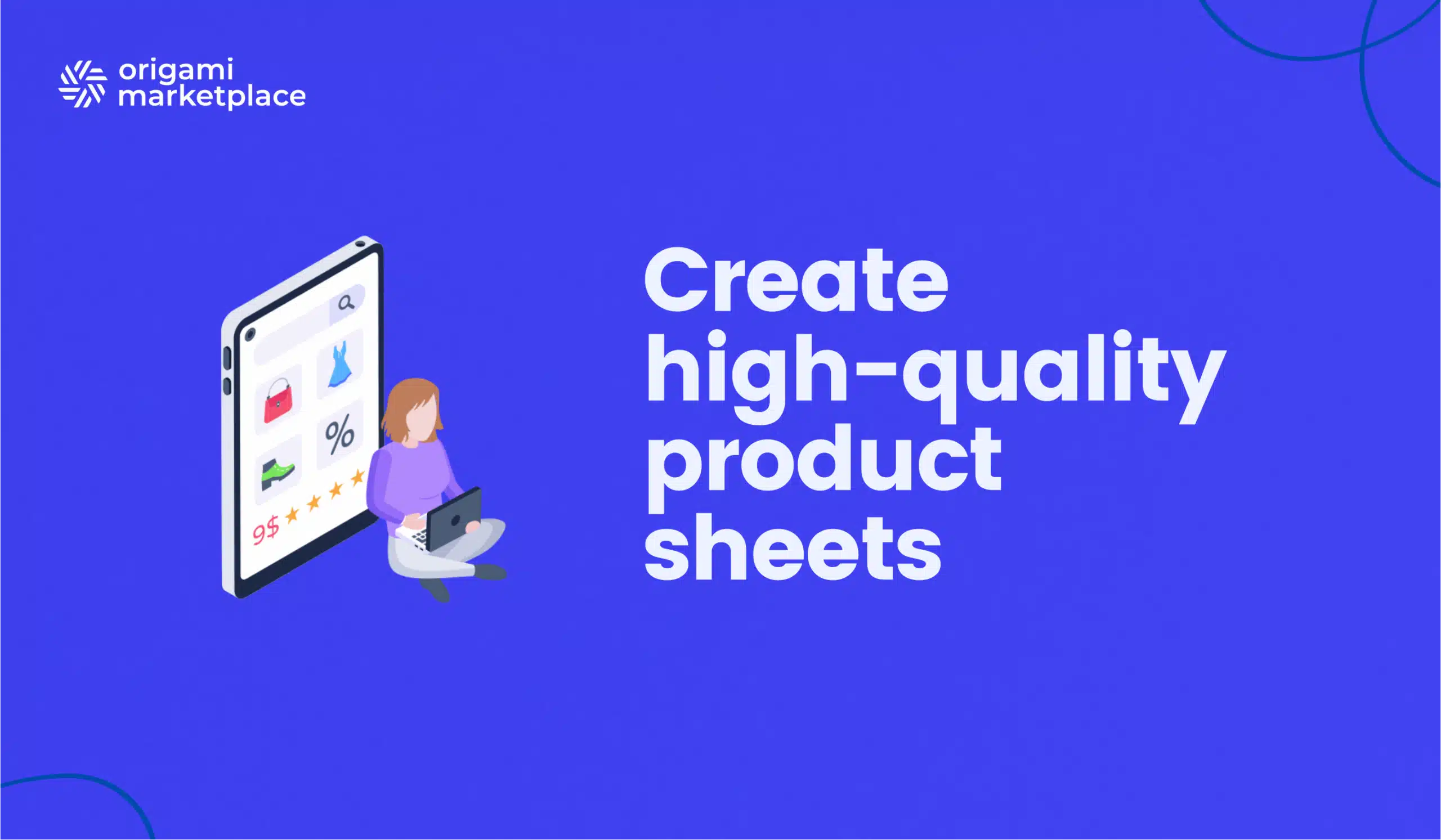How to create a website like Etsy? Complete guide
- Arnaud
- 8 minutes reading

Etsy has established itself as the global benchmark for selling handmade items, artisanal creations, and vintage objects. Thanks to its niche positioning, a strong community spirit, and a smooth user experience, the marketplace has attracted millions of sellers and buyers who are passionate about craftsmanship.
How was Etsy founded? What are the keys to its success? And above all, how can you create a similar website? In this article, we revisit Etsy’s history, analyze its business model, and present the essential steps to develop your own marketplace. Whether you are a creator, an entrepreneur, or simply curious to discover the inner workings behind Etsy’s success, you will find practical advice here to get started and make your project a success.
- What is Etsy?
- Success in figures
- The pillars of Etsy’s success
- What are the main features of a marketplace like Etsy?
- How do websites like Etsy make money?
- How to create a website like Etsy?
- How much does it cost to create a site like Etsy?
- Current trends in the marketplace industry
- Launch your marketplace with Origami Marketplace
👋 No time to read the whole article? Find the summary here.
1. What is Etsy?
Etsy is an online marketplace specialized in selling handmade products, vintage items, and creative objects. Launched in 2005 by Robert Kalin, Chris Maguire, and Haim Schoppik, the platform identified a gap in the market: there were already horizontal giants like Amazon and eBay, but none of them offered a solution truly suited to artisans and creators wishing to sell their handmade products. Thus was born a vertical marketplace targeting lovers of unique items and DIY (Do It Yourself). Etsy quickly appealed to consumers who wanted to support small creators and purchase items different from mass-produced goods. This approach became even more relevant in the era of “smart consumption” and the search for authenticity.
A story born from a real need.
Before launching Etsy, the three founders were woodworking enthusiasts struggling to sell their wooden creations. They were looking for a way to give more visibility to their handmade products and those from other creators. This is how the idea of building a marketplace allowing artisans from all over the world to showcase and sell their creations was born.
The origin of the name Etsy:
Robert Kalin, one of the co-founders, wanted a unique and original name. He was inspired by watching the Italian version of the film Eight and a Half by Federico Fellini. Often hearing the expression “eh si”, he transformed it into “Etsy”. This nod to the artistic process perfectly aligns with the platform’s artisanal identity.

2. Success in figures
- Valuation: Over $12 billion in market capitalization in 2022.
- International presence: More than 234 countries covered.
- Number of sellers: Over 7.5 million in 2021. Notably, there were 2.7 million in 2019, illustrating massive growth especially during the pandemic.
- Number of buyers: Nearly 97 million since 2024.
- Sellers’ profile: 97% of them run their business from home, and 38% are not based in the United States.
- Net income: $493 million in 2021, compared to $349 million in 2020 and $95.89 million in 2019.
These figures not only show Etsy’s global scale but also the strength of its business model. The network effect further drives growth: the more sellers there are, the broader the product variety becomes, and the more the platform attracts new buyers.
3. The pillars of Etsy’s success
A. A niche positioning (vertical marketplace)
Unlike “horizontal” marketplaces such as Amazon or Alibaba, Etsy focuses on specialization. Its DNA is based on highlighting handmade and custom-made items. This strong identity resonates with consumers seeking unique objects rather than mass-produced goods. This vertical positioning also facilitates the optimization of features and communication: Etsy knows exactly who it’s targeting and can develop focused marketing.
B. A close-knit community
Etsy encourages the formation of a community around handmade products. Sellers share their experiences, exchange tips, and buyers appreciate the story and authenticity behind each product. This closeness is crucial for establishing trust. To illustrate this community aspect, Etsy introduced Etsy Labs: entrepreneurship workshops and artisanal skill-sharing sessions led by experienced sellers or hired directly by Etsy to advise the community. This approach has greatly contributed to building a loyal user base that recommends the platform to others.
C. A simple and intuitive user journey
- Seller interface: quick setup of personalized stores, inventory management tools, and an integrated payment system.
- Buyer interface: category-based navigation, advanced search features, multiple payment options, and the ability to leave detailed reviews.
The simplicity of the user journey, for both the seller and the buyer, remains a key factor for success in the world of marketplaces. A process that is too complex quickly discourages new sign-ups.
D. An effective content strategy
From the very beginning, Etsy focused on high-quality product listings with carefully curated photos and comprehensive descriptions. The platform also encourages storytelling (the story behind each creation), a key element to appeal to fans of artisanal goods. Storytelling in product listings can include the origin of the materials, the technique used, or the artist’s inspiration. This humanizes the transaction and can sometimes justify a higher price.
Ready to turn your B2B, B2C, or C2C marketplace vision into reality?
To help you develop the best platform possible, we’ve gathered all the must-have features, key technical considerations, and best practices in a comprehensive document:
Download the Specifications template 🗒
Perfect for smaller or medium-scale projects without a formal purchasing process. It will help you outline your requirements effectively and streamline your selection process.
Download the Request for Proposal template 📒
Ideal for larger, more complex marketplace projects with a formal purchasing department or advanced procurement policies.
4. What are the main features of a marketplace like Etsy?
To succeed in matching or even surpassing Etsy with your marketplace project, here are some essential features to include:
-
Customized profiles for sellers and buyers: A mini-store for sellers (photos, banner, logo, descriptions) with the option for buyers to view all products and reviews for a given seller.
-
Listing and advertisement system: A streamlined process for uploading products, with the option to add product variations (size, color, etc.) and track available stock.
-
Transaction and payment management: Automatically collected commissions, funds held to secure transactions, and acceptance of multiple currencies and payment methods (PayPal, credit cards, Apple Pay, Google Pay, etc.).
-
Communication tools: An intuitive messaging system to encourage dialogue between seller and buyer (questions, negotiation, customer service). A fluid messaging system fosters transparency and can help reduce disputes.
-
Review and rating features: Buyers should be able to leave comments and a rating for each transaction. This is crucial because reviews build trust and encourage sales.
-
Logistics management: There should be multiple shipping options; sellers should also be able to choose their own carrier or rely on an integrated solution.
-
Advanced personalization and categorization: Advanced search (filters, keywords, suggestions) and the option to sell digital products (file downloads) or physical products.
In addition to these core features, also consider managing returns, refunds, and implementing clear policies to ensure a positive experience on both sides (seller and buyer).
5. How do websites like Etsy make money?
Etsy generates revenue from multiple sources. This diversity of income streams helps maintain financial stability, even if certain lines of revenue temporarily dip:
-
Listing fees: Around $0.20 per product listing, valid for four months or until the item is sold.
-
Sales commissions: 6.5% per completed sale, charged on the total amount (including shipping fees).
-
Seller subscriptions (Etsy +): For about $10/month, sellers gain access to additional features (advanced shop customization, ad credits, etc.).
-
Ads and sponsored placements: Sellers can pay to increase the visibility of their products (sponsored listings, off-site ads, etc.).
-
Payment processing fees: When sellers opt for Etsy Payments, variable fees (around 3–5%) apply per transaction.
When setting up a marketplace, it's essential to choose the right technology from the outset. A high-performance, scalable platform like Origami Marketplace lets you concentrate on what really matters: developing your community and optimizing your monetization strategy. Too often, the wrong technical choices slow down growth and make management more complex. My advice: invest in a robust solution that's ready to grow with your ambitions.

Antoine Mantel
→ Talk to our solution expert.
6. How to create a website like Etsy?
A. Study the market and validate your idea
- Analyze the unmet needs of generalist marketplaces.
- Consult potential sellers to identify a niche (e.g., eco-friendly products, locally made creations, etc.).
- Conduct surveys or organize one-on-one interviews to understand what appeals (or not) to sellers.
B. Choose the business model
- Determine the type of marketplace: C2C, C2B2C, B2B, P2P, B2C, or hybrid. (For example, Etsy is primarily P2P.)
- Define your revenue streams: sales commissions, listing fees, subscriptions, etc.
C. Select the right technology
- From-scratch development: Long and expensive depending on complexity.
- E-commerce CMS: e.g., WooCommerce with multi-vendor plugins, but can be limited in the medium term.
- Turnkey (SaaS) solutions: e.g., Origami Marketplace, to quickly launch a platform with essential features (multi-vendor, payments, logistics, etc.).
- Scalability and technical maintenance: An unsuitable choice can hinder growth and increase costs.
D. Refine the user experience (UX/UI)
- Smooth registration for sellers (make store creation easy).
- Powerful search for buyers (filters, suggestions).
- Highlight attractive product images.
- Share brand stories (storytelling).
Good ergonomics are essential for retaining both sellers and buyers. An intuitive interface will increase your retention rate.
E. Build the community
- Forums, blogs, or social media groups.
- Implement incentive programs to encourage engagement.
- Start a private Facebook or Discord group to support your sellers.
- Host themed webinars to share tips and answer questions.
F. Manage logistics and build trust
- Offer multiple shipping methods to suit different needs.
- Effectively handle disputes (refunds, returns).
- Implement a verification and moderation system to prevent counterfeits and abuse.
Trust is crucial. A mishandled dispute can damage your reputation and deter other users.
7. How much does it cost to create a site like Etsy?
To best determine your budget, be sure to factor in marketing, customer support, and technical maintenance costs, in addition to development alone. A thorough global estimate helps avoid unwelcome surprises. The cost will mainly depend on your approach:
- Custom development: from $50,000 to over $500,000 depending on complexity and the need for a dedicated technical team. Timelines can be significant (several months), potentially delaying your time-to-market.
- E-commerce solutions + plugins: more affordable, but can quickly become complex to maintain (plugin compatibility, licensing costs).
- Turnkey SaaS solutions like Origami Marketplace: a flexible budget based on the features you choose, personalized support, and a shorter time-to-market.
8. Current trends in the marketplace industry
A. From Generalist to Specialized
Vertical marketplaces like Etsy and Vinted show that a precise focus on a particular segment allows you to attract a more loyal community and generate greater added value. This model demonstrates the growing interest in specialized platforms.
B. The Boom of the C2C Market
Peer-to-peer buying and selling is experiencing tremendous growth, driven by:
- A better user experience: simplicity and intuitive platforms.
- Trust: direct interaction between sellers and buyers.
- Cost savings: often more attractive prices.
Consumers value this model for its sense of closeness and the unique nature of the products on offer.
C. A More Responsible Economy
Handmade, recycled, upcycled, or ethical products are gaining popularity. Platforms are now integrating services and labels to highlight these eco-friendly aspects and meet the expectations of socially conscious consumers.
D. Continuous Adaptation to New Expectations
Platforms must constantly adjust to meet users’ demands, notably:
- Mobile-first: a majority of users browse and make purchases via their smartphones.
- Simplified logistics: the introduction of drop-off points, real-time package tracking, and easier return processes.
- Diversified payment options: integration of multiple payment methods, from credit cards to PayPal, as well as digital wallets and even cryptocurrencies.
These trends highlight the importance of providing a smooth, intuitive, and personalized experience while aligning with current concerns (environment, accessibility, trust).
9. Launch your marketplace with Origami Marketplace
Bring your project to life quickly and support your growth:
A modular, turnkey SaaS solution:
- Multivendor management: Easily centralize and manage your sellers’ activities.
- Secure online payments: Integrate reliable solutions for smooth transactions.
- Simplified logistics: Collaborate with over 25 carriers for optimized deliveries.
- Intuitive interface & marketing tools: Simplify management and boost your platform’s visibility.
- Advanced customization: Tailor the solution to your concept and brand identity for a unique platform.

Free yourself from technical constraints:
Thanks to Origami Marketplace’s SaaS approach, you can focus on your vision, the growth of your community, and your monetization strategy. We handle everything else.
A dedicated marketplace expertise:
As specialists in platforms like Etsy, we immediately provide you with the key features for success. This way, you can focus on what truly matters: your strategy, your users, and showcasing your products.
Creating a website like Etsy requires a clear vision, a niche positioning, and a solid technical execution. Specialized marketplaces are booming because they better meet the specific needs of their users. By understanding Etsy’s journey, integrating the right tools, and leveraging solutions like Origami Marketplace, you increase your chances of success.
Interested in discussing your project?
Contact us to find out how Origami Marketplace can support you in creating and launching your artisanal, creative, or second-hand platform, modeled on Etsy.
Creating a website like Etsy: what you need to know!
- Etsy: a successful niche example: With its artisanal and authentic positioning, Etsy meets the expectations of an audience looking for unique, responsibly produced items.
- The pillars of success: A close-knit community, an intuitive user interface, and a marketing strategy centered around product storytelling.
- Keys to building your marketplace: Analyze the market, choose scalable technology, refine the UX/UI, and invest in creating an engaged community.
- Technology and support: A SaaS solution like Origami Marketplace provides a fast launch and expert guidance to secure your business model and maximize your chances of success.
Do you have a project in mind? Launch it with the right tools and a clear vision to replicate Etsy’s model! Discover how Origami Marketplace and its network of partners can transform your idea into a thriving business, thanks to its innovative marketplace-based solution.


